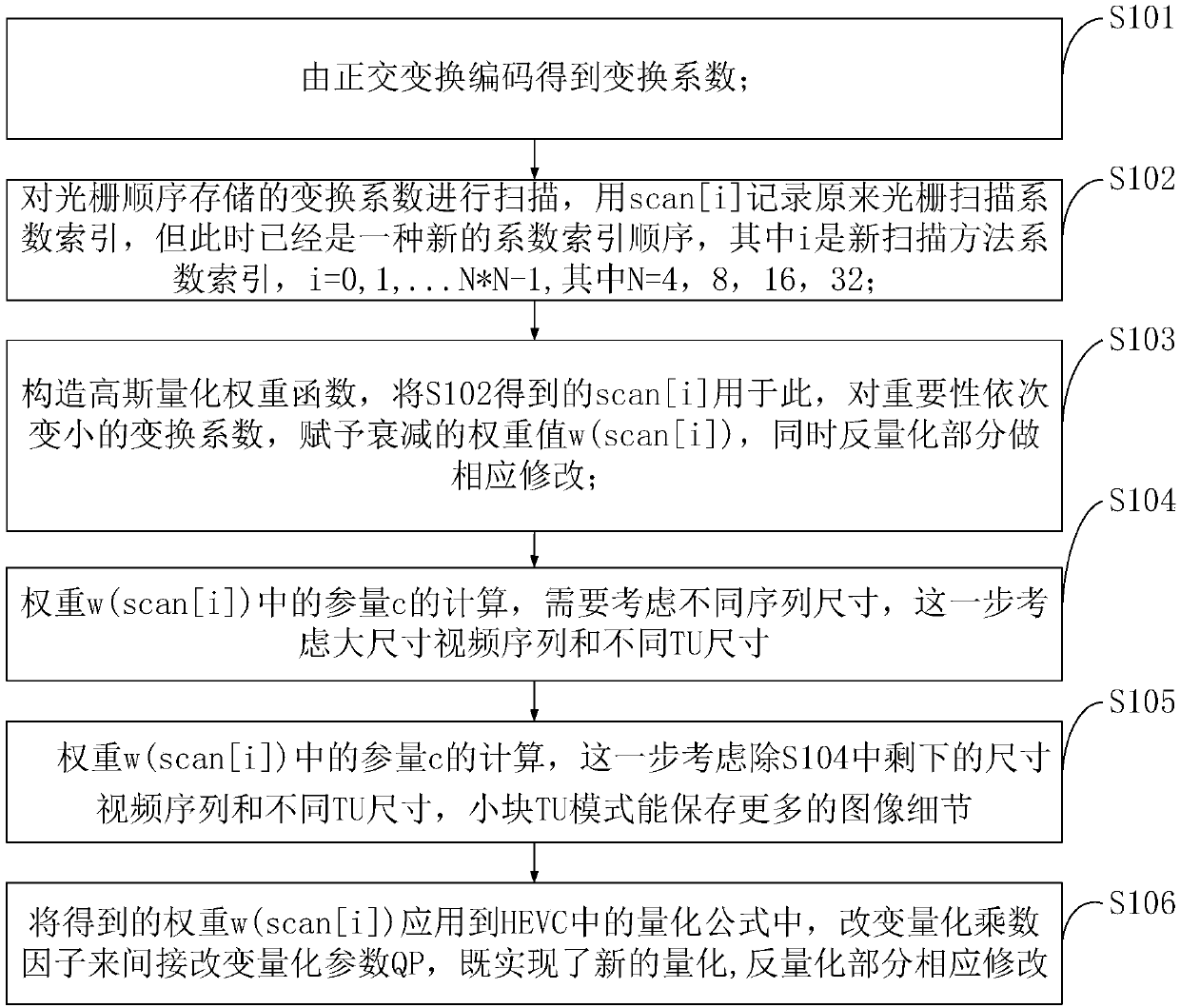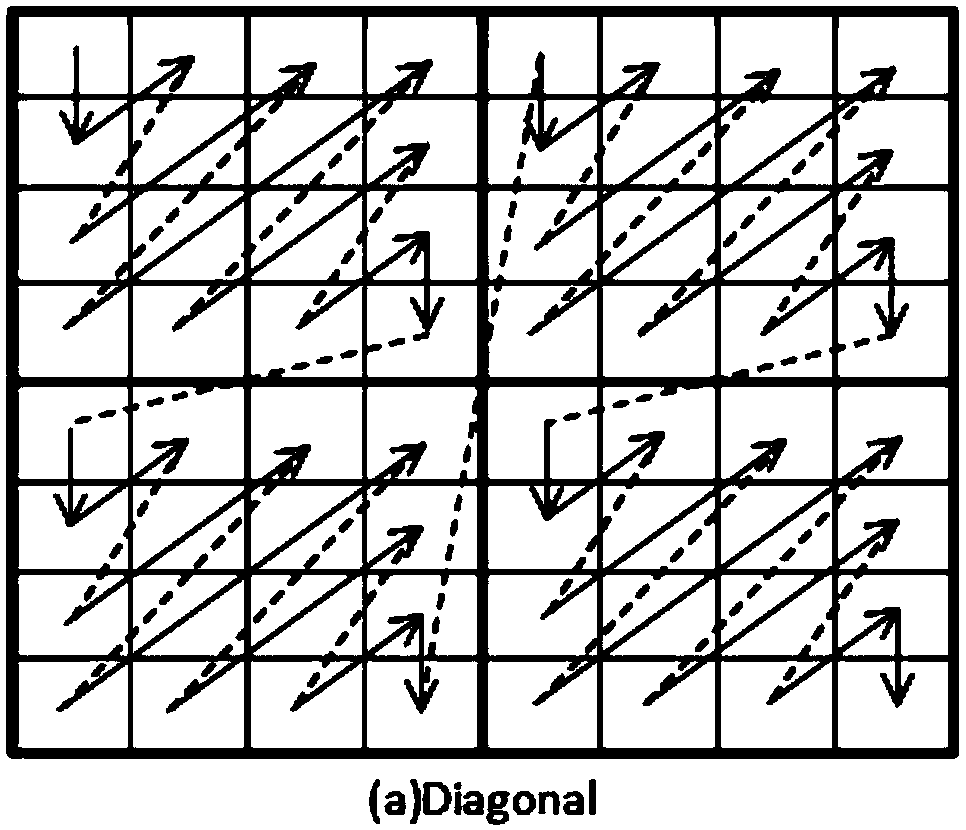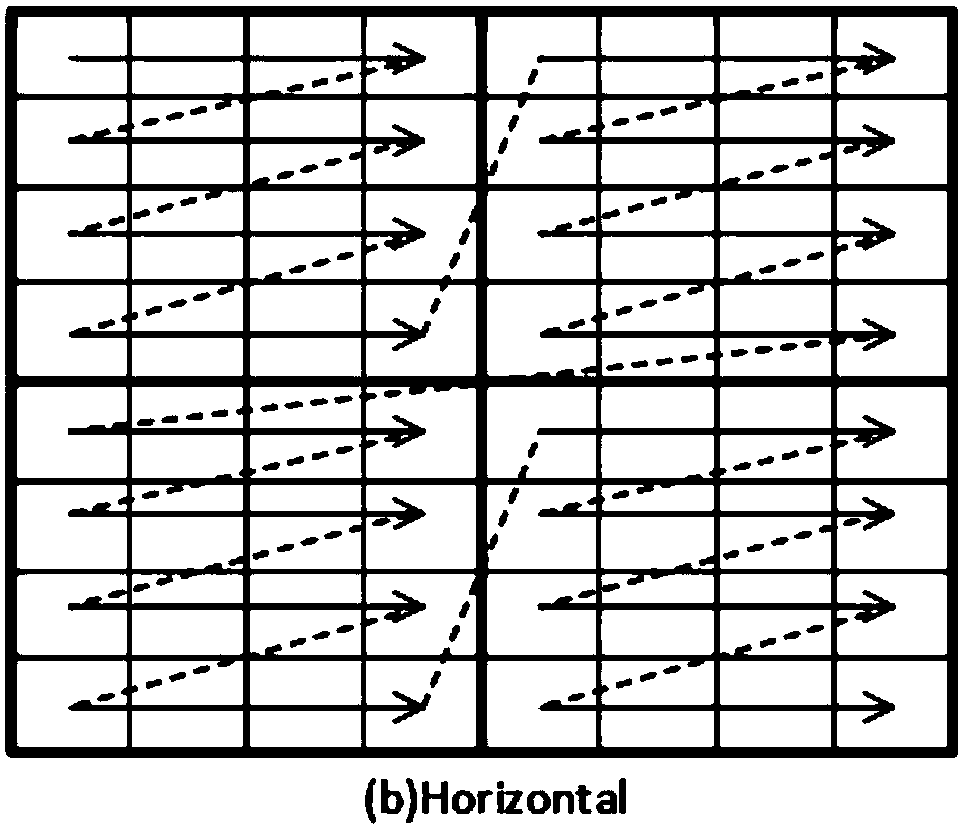A Coefficient-Level Adaptive Quantization Method
An adaptive quantization and coefficient-level technology, applied in digital video signal modification, image communication, electrical components, etc., can solve the problems of inability to adapt to coarse quantization and fine quantization, and achieve the effect of video coding performance improvement
- Summary
- Abstract
- Description
- Claims
- Application Information
AI Technical Summary
Problems solved by technology
Method used
Image
Examples
Embodiment Construction
[0047] Such as figure 1 As shown, a coefficient-level adaptive quantization method is characterized in that it comprises the following steps:
[0048] S101. Perform orthogonal transform coding on the residual data to obtain transform coefficients;
[0049] S102. Scan the transformation coefficients stored in raster order, and use scan[i] to record the original raster scan coefficient index, but at this time it is already a new coefficient index order, where i is the new scan coefficient index, i=0,1 ,...N*N-1, where N=4,8,16,32;
[0050] S103. Construct a Gaussian quantization weight function, use the scan[i] obtained in S102 here, assign the attenuated weight value w(scan[i]) to the transformation coefficients whose importance becomes smaller in turn, and do corresponding dequantization at the same time Revise;
[0051] S104, the calculation of c in the weight function needs to consider different sequence sizes, because the energy concentration of TUs in different sizes is...
PUM
 Login to View More
Login to View More Abstract
Description
Claims
Application Information
 Login to View More
Login to View More - R&D
- Intellectual Property
- Life Sciences
- Materials
- Tech Scout
- Unparalleled Data Quality
- Higher Quality Content
- 60% Fewer Hallucinations
Browse by: Latest US Patents, China's latest patents, Technical Efficacy Thesaurus, Application Domain, Technology Topic, Popular Technical Reports.
© 2025 PatSnap. All rights reserved.Legal|Privacy policy|Modern Slavery Act Transparency Statement|Sitemap|About US| Contact US: help@patsnap.com



